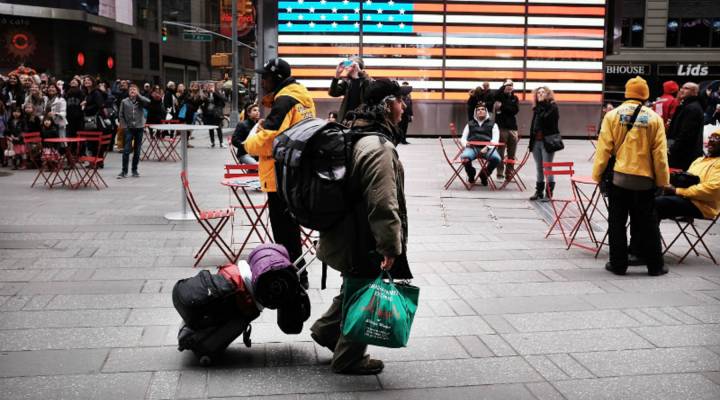
Counting the homeless

The Department of Housing and Urban Development (HUD) releases data on homeless Americans each year, and those numbers are always open to debate. Bruce Lesley is the president of First Focus, which advocates for homeless families. He said HUD’s definition is limited.
“They look at things like families who are staying in homeless shelters, families who are on the streets, parks, light-rail stations, tunnels, those kinds of things,” Lesley said.
That excludes a group that includes around 7 million low-income Americans.
“People who have lost their own homes and are doubling up with others due to economic necessity,” said Maria Foscarinis, executive director of the National Law Center on Homelessness and Poverty. “They simply cannot afford a home of their own.”
Some advocates caution that not all of those “doubling up” are homeless, or would be homeless, if they were forced to move out.
“A lot of people have their college-aged children living with them,” said Nan Roman, president of the National Alliance to End Homelessness. “The college-aged children may be low income or may be staying with their parents for economic reasons. But you certainly wouldn’t say that they’re homeless.”
She says people who are facing imminent eviction, on the other hand, are another category of homeless.
There’s a lot happening in the world. Through it all, Marketplace is here for you.
You rely on Marketplace to break down the world’s events and tell you how it affects you in a fact-based, approachable way. We rely on your financial support to keep making that possible.
Your donation today powers the independent journalism that you rely on. For just $5/month, you can help sustain Marketplace so we can keep reporting on the things that matter to you.












